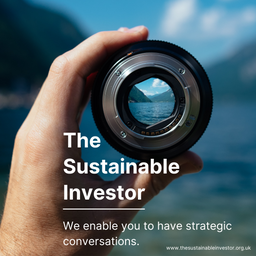
What investors think about green steel matters
It's sometimes easy to forget that financial markets are driven by sentiment. The 'facts' that investors believe to be true matter. For green steel, apparently 80% of investors believe the risk profile for metallurgical coal will increase in the next decade. A clear market signal.
It's sometimes easy to forget that financial markets are driven by sentiment. The 'facts' that investors believe to be true really do matter. If investors are positive (bullish) about a company's future prospects, they will think its financial value should be higher. And if they are negative (bearish) they will think it should be lower.
Why do we call this sentiment rather than fact? Because valuation is about the future, and as a result it's fundamentally unknowable. At its core financial markets are driven by what investors believe to be true. This applies to important energy markets such as Oil & Gas ( = stranded asset concerns), and to industrial sectors such as steel and mining. If investors believe that demand for non green products will decline, then that will be negatively reflected in share prices.
Which is why a recent ACCR report caught our eye. They surveyed investor attitudes to green steel, and by implication what they thought about the long term prospects for metallurgical coal. And the results should be worrying to coal miners and traditional blast furnace steel producers. The majority of investors can see a transition away from using coal to make steel. And potentially more importantly, 80% believe the risk profile for metallurgical coal will increase in the next decade.
Why does this matter? A higher risk profile equates to a lower valuation, so it looks like investor sentiment toward the sector is weakening - which will probably mean lower share prices.
This is a What Caught Our Eye story - highlighting reports, research and commentary at the interface of finance and sustainability. Things we think you should be reading, and pointing out the less obvious implications. All from a finance perspective.
It's free to become a member ... just click on the link at the bottom of this blog or the subscribe button. Members get a summary of our weekly posts, including What Caught Our Eye and Sunday Brunch, delivered straight to your inbox. Never miss another blog post !
A tougher future for all coal?
The Australasian Centre for Corporate Responsibility (ACCR) commissioned a global survey of investors in the steel value chain. 500 respondents from 34 countries were surveyed, all from institutions with investments in steel making, iron ore and/or metallurgical coal mining. It's findings should give companies in the industry, and their investors, pause for thought.

A couple of data points leapt out at us.
First, as we highlighted above, the majority of investors (68%) foresee a transition away from metallurgical coal in steel making (via blast furnaces). And 80% believe metallurgical coal’s risk profile will increase in the next decade. This suggests that investor attitudes toward the risks have passed the tipping point. While a minority of investors can hold up a company's share price for a while, it's hard to see them permanently 'swimming against the tide'.
It suggests to us that a growing number of investors will, quietly or publicly, be lobbying the companies to stop new investment in coal mines and blast furnace steel works. And to start to pivot away from these activities.
Second, 59% of investors supported the import of green iron as a practical solution in regions where renewable energy capacity is constrained. The ACCR saw this as indicating ..
"strong investment support for ‘green iron corridors’, placing countries like Australia and Brazil, where green hydrogen is cheaper to produce, in a strong position to become major green iron exporters to steelmakers in countries with limited access to renewables, like Japan."
What is green iron, and where might it be produced for steel mills in Europe?
There are three main methods of making steel (there is a great diagram on page 10 of an earlier ACCR report - Forging pathways : Green steel). The most common (c. 70%) is via a blast furnace. This is the process that uses coal. The second is Electric Arc Furnaces, which mostly use scrap steel, so much lower emissions. And the third is what is known as DRI-EAF, which stands for Direct Reduction Iron - Electric Arc Furnace. This not only doesn't use coal (it uses hydrogen instead) but the two processes can be separated.
We can make the green iron (the DRI part) close to the iron ore mines, in places with abundant renewable electricity, and then ship it to the Electric Arc Furnaces, which will turn it into steel.
We wrote about this back in September 2022, with the potential for green iron for European electric arc furnaces to come from the Middle East and North Africa.

A last thought
As Ben Graham famously said "in the long run financial markets are weighing machines". This suggests that one approach is for investors to 'just wait' for the markets to catch up, and over time the share price will rise.
But there is another way - make the change happen. As investors we have the ability to allocate some of our capital to new green steel (and DRI) projects. And we can influence coal miners and blast furnace steel makers to transition faster toward greener steel production methods. This not only makes financial and investing sense, it also helps our clients, the asset owners, achieve their non financial investment objectives as well.
And remember, between now and 2030, 71% of the world's steel making assets will reach the end of their operating lives, necessitating significant investment or replacement with new production facilities. The time to act is now.

Please read: important legal stuff.



